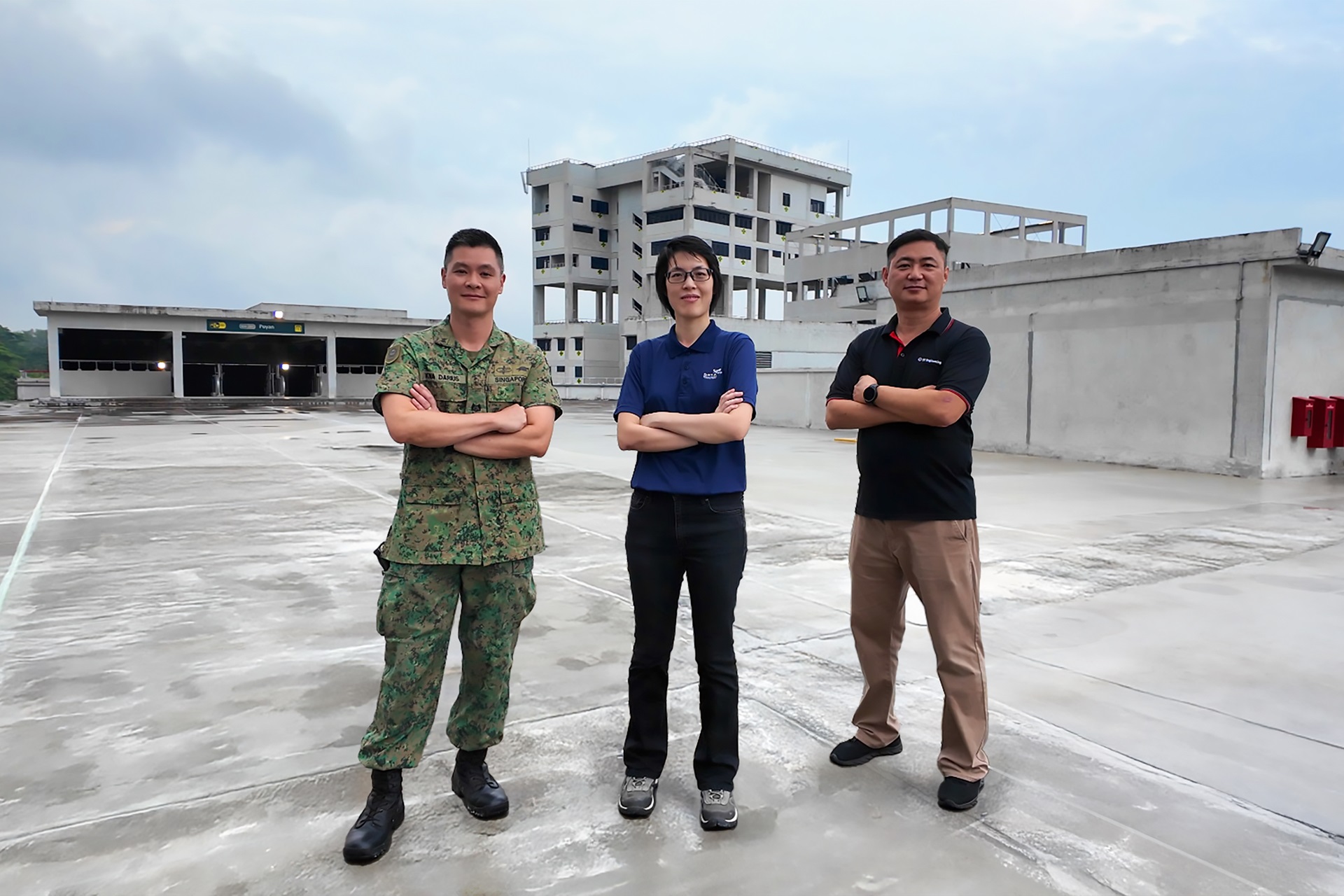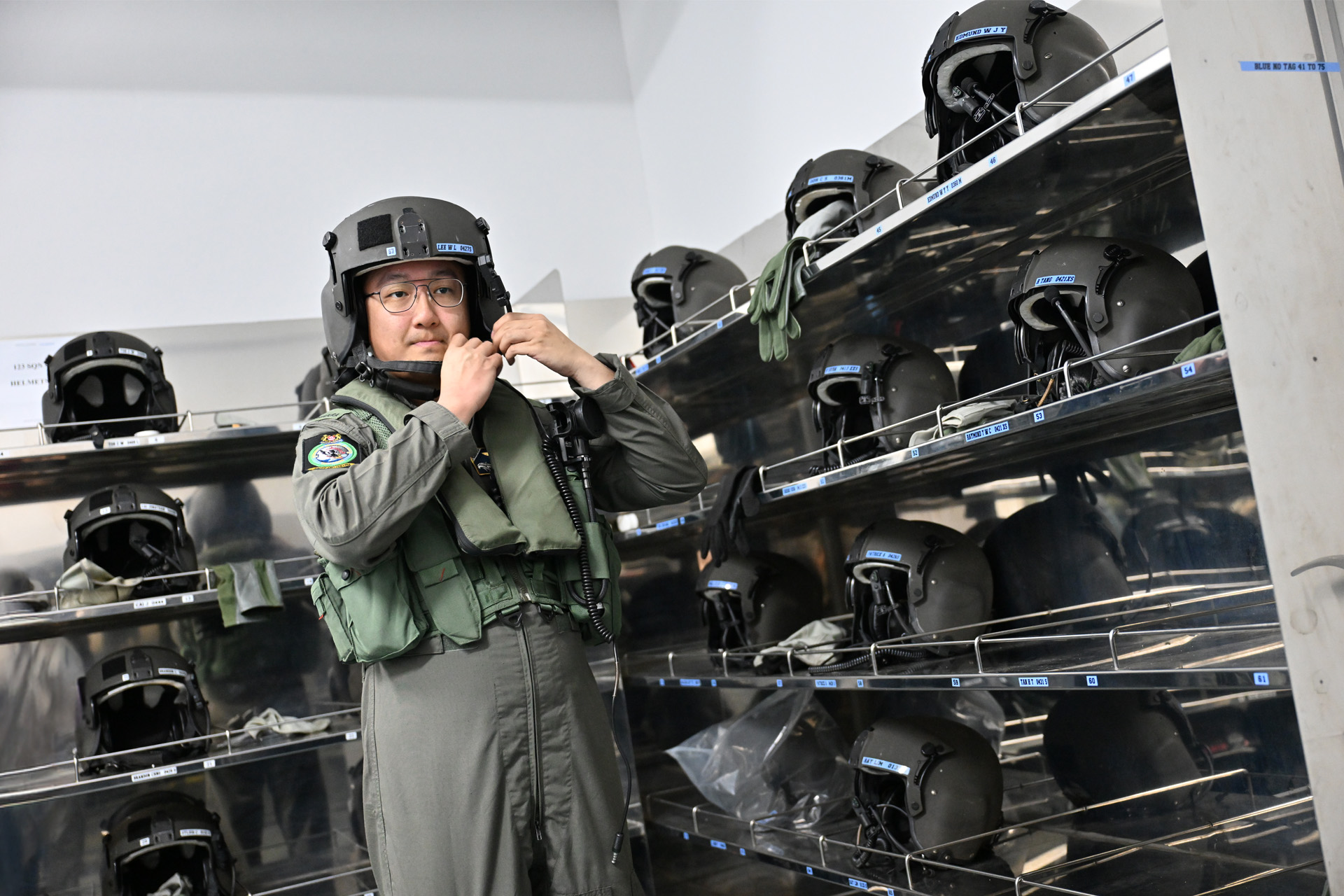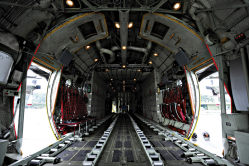TECHNOLOGY
HERCULES REBORN
24 Jan 2011

The Republic of Singapore Air Force's (RSAF's) venerable C-130 Hercules medium-lift aircraft gets a 20-year extension of life following a comprehensive systems upgrade.
The C-130 Hercules military transport aircraft in service with the Republic of Singapore Air Force (RSAF) has been a dependable workhorse since 1980. Operated by 122 Squadron (SQN), the C-130s have the distinction of being among the handful of aircraft to have been deployed into hostile areas by the RSAF.
In 2007, the squadron embarked on a project to refresh the aircraft's avionics and peripheral systems. The upgrade focused on improving the reliability of its flight systems and extending the aircraft's service life by replacing soon-to-be obsolete equipment.
ST Aerospace was contracted to deliver the upgrades to the RSAF, using technology from Rockwell Collins.
The first upgraded aircraft was handed over to the squadron on 22 Jul 2010. Shortly after, the second aircraft underwent ground testing and was flown in December 2010.
Born in 1957, the C-130 is not a newcomer to the world of military aviation, yet it remains in service with many armed forces worldwide, providing critical tactical airlift capabilities.
In fact, it is the only military aircraft with a 50-year unbroken production record to remain in service with its original customer, the United States Air Force.
Better control
In the cockpit, steam gauges (needle-and-dial analogue displays) have been replaced by a set of five Multi-Function Displays (MFDs) spread across the flight deck in the cockpit of the aircraft. These MFDs integrate all the displays that pilots would need to monitor when flying the aircraft, such as altitude and horizon representation in a graphical manner.
The new flight deck optimises the use of real estate on the aircrew instrument panel, allowing for an uncluttered presentation to the aircrew.
This improves the interface between operator and machine, resulting in reduced crew workloads and minimal human errors during operation.
Enhanced usability
The new displays group relevant information together on each panel; such as directional indicators and flight plans on one panel and primary instrumentation such as altitude and speed on another. Pilots will also share one panel situated between them which displays engine parameters such as temperature and revolutions.
Previously, each steam gauge would allow the pilot to monitor only one parameter. To make sense of the information, pilots would have to read each gauge and correlate the readings.
According to C-130 pilot Captain (CPT) Ng Tian Chuan of 122 SQN, the flight deck upgrades reduce the pilots' workload while in the air. "We can give more attention to our missions since the screens give us all the information we need at a glance. It is also easier to read and makes flying the aircraft more efficient."
Practical tweaks
Under the RSAF, the C-130 has gone on Humanitarian Assistance and Disaster Relief operations, joined international coalition forces in the reconstruction efforts of post-war Iraq and been called upon to lift other Singapore Armed Forces assets and personnel to where they are needed.
To support its crew in handling these missions with greater ease, the C130 was given an upgraded environmental control system. This provides both crew and passengers with a more comfortable environment during flight.
The C-130's communications suite was also upgraded. The upgrade included digital radio transmitters that comply with international airspace standards. Before the upgrade, the communications systems found on the RSAF's C-130s prohibited them from entering some areas of European airspace. This was because the older systems were incompatible with some of the local air traffic control communications systems.
To deliver uninterrupted power to these upgrades, ST Aerospace installed an electrical system with a higher capacity.
ST Aerospace is the prime contractor for this slew of upgrades, and will carry out systems and aircraft integration, as well as modification and the conduct of ground and flight tests. The company will also handle integrated support tasks such as pilot and ground crew training, updates to and provisions of new aircraft manuals and equipment spares.
The entire upgrading project will span seven years. The third aircraft is currently being upgraded and is expected to be completed in May. By the third quarter of 2014, the RSAF will take delivery of the 10th and last revamped C-130.
ALSO READ IN TECHNOLOGY

AI joins the fight in national cyber defence exercise
12 Nov 2025
AI and closer collaboration among agencies and industry are taking centre stage in this year’s Critical Infrastructure Defence Exercise (CIDeX).

They built this city
01 Oct 2025
Turning vision to reality: the team behind SAFTI City clinches the Defence Technology Prize 2025 Team (Engineering) Award!

Operating over skies & seas
22 Aug 2025
This gear is designed to help a Sensor Supervisor survive emergencies in the air and at sea.





